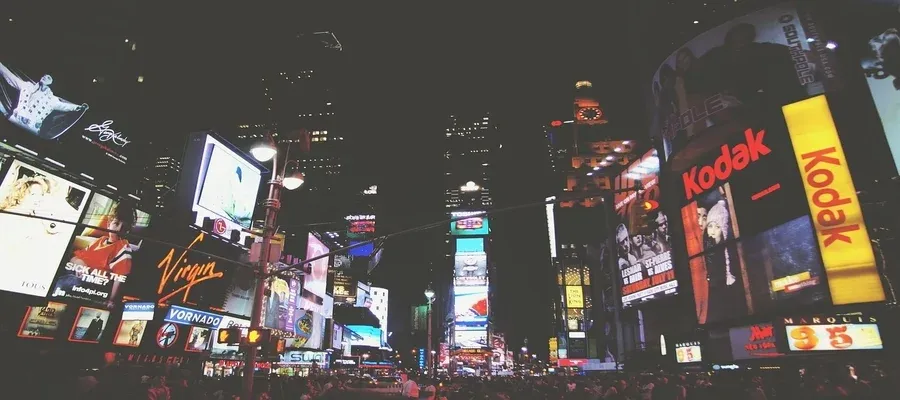
OOH! Why Out-of-Home Advertising Success is Driven by Data
Of all the different types of advertising out there, out-of-home often gets the worst rap — the billboards with bible quotes on the highway, the lawyer’s face plastered on a bus stop bench, the piece of paper taped to a telephone poll promising that you can be taught guitar. But times have changed, and so has out-of-home. There is a creative renaissance happening in the world of outdoor advertising, and it is being driven by data and technology.
For all its boring reputation, out-of-home advertising has always been important and effective (and by always, we mean it. This is essentially the oldest form of advertising there is). According to ICP, roughly 3 in 4 people view messages on billboards, roughly 1 in 4 have visited a website in response to an OOH ad, and those bus stop ads? They reach a staggering 92% of the US population on a weekly basis! And for all this success, these ads cost only about 20% of a TV ad.
There is one other obvious automatic benefit to out-of-home advertising — its very nature makes it immune to the wild changes in newer forms of advertising. People may watch less TV, or pay to not have to listen to ads — but pretty much everyone goes outside.
But, just because OOH is ‘old-school,’ it doesn’t mean that it doesn’t take advantage of the data-driven advances that other forms of advertisements utilize. As marketingdive.com states:
The static billboards of the past are increasingly being replaced by dynamic digital signs that update in real-time and are activated by mobile devices or connected cars, pointing to how the integration of digital technology with out-of-home (OOH) advertising unlocks interesting opportunities for marketers.
Now, more than 50% of billboard purchases are now digital, and with this use of technology, brands have gotten creative.
Here is an example from Ad Age:
Digital billboards for New Balance studied people by camera as they approached, then applied AI to decide whether they were wearing typical outfits—or something remarkable enough to highlight live on-screen, accompanied by the admiring banner, "Exception Spotted."
Another example is billboards knowing the speed of traffic and changing the messaging depending on that speed. So, if traffic is moving at 60 miles an hour, the messaging will be very brief, but if traffic is moving at a standstill, the messaging will be longer.
Technology is also utilized in the collection and use of data — something out-of-home advertising has struggled to get a hold of in the past. Many billboards have now been outfitted with sensors that collect data on foot traffic. This allows brands to better understand demographics and where to place their ads.
Companies that specialize in geographic data (like Lineate) can find communities with demographics similar to a brand’s familiar territory, in a process called “look-alike audiences.” This gives brands new reach in specialized areas that match their desired demographic. Essentially, brands now possess the ability to fully utilize out-of-home advertisements, and track who has seen the ad, as well as track the behavior of the potential customers afterward, through the use of companion apps, website hits, and sales data.
Out-of-home advertising has become increasingly important to a brand’s messaging. If you need further proof, just note that last year Netflix spent a whopping $150 million dollars on the purchase of billboards in Los Angeles. And while OOH ads are important, so too are the new data and technology that come with them.
To get started on leveraging the data you need to get started on your own out-of-home ad campaign, reach out to us for a free evaluation with our SA team.
Share:
Got a project?
Harness the power of your data with the help of our tailored data-centric expertise.
Contact us